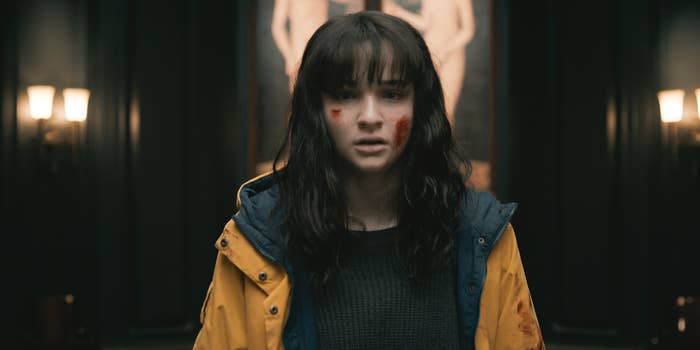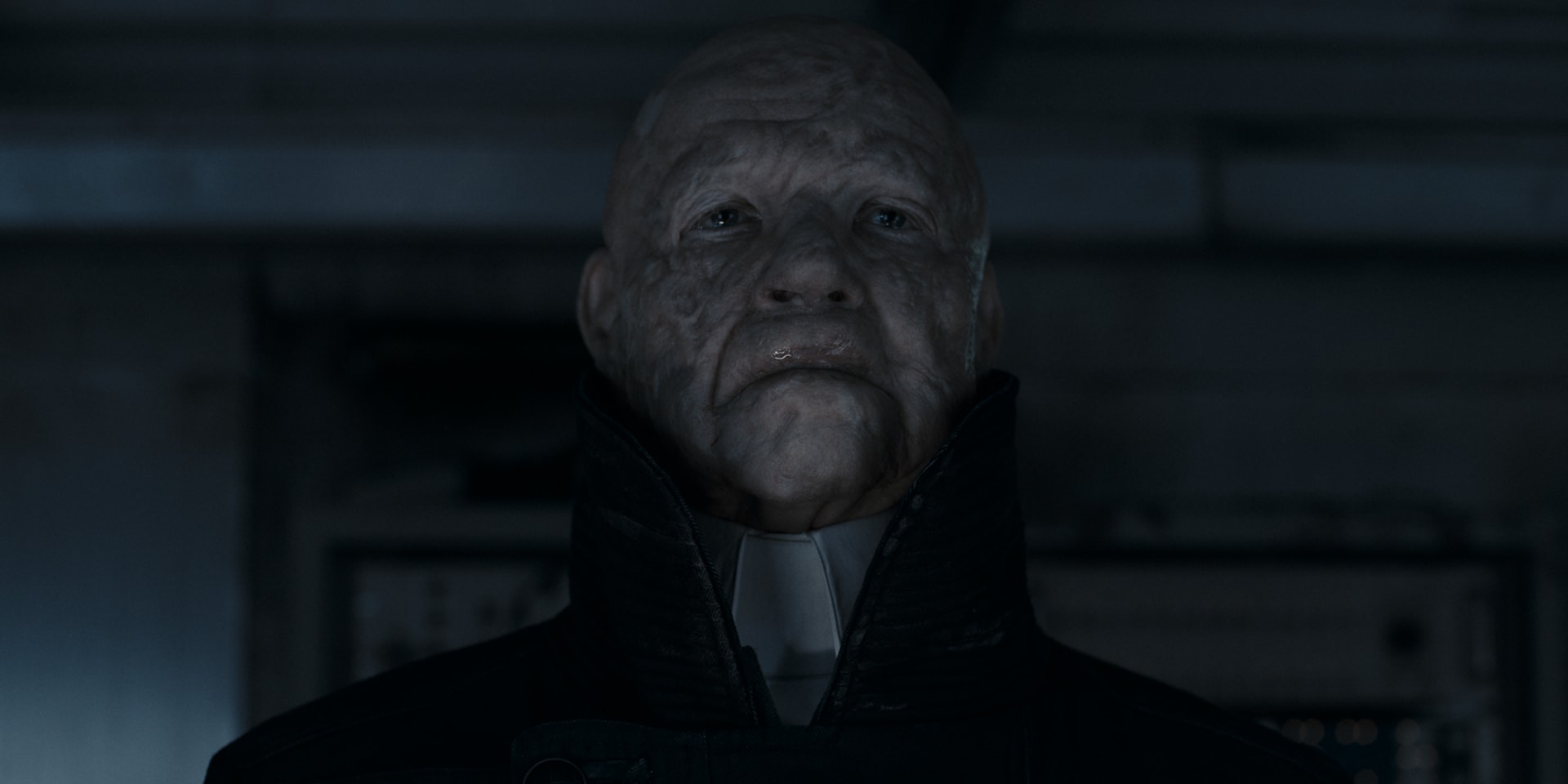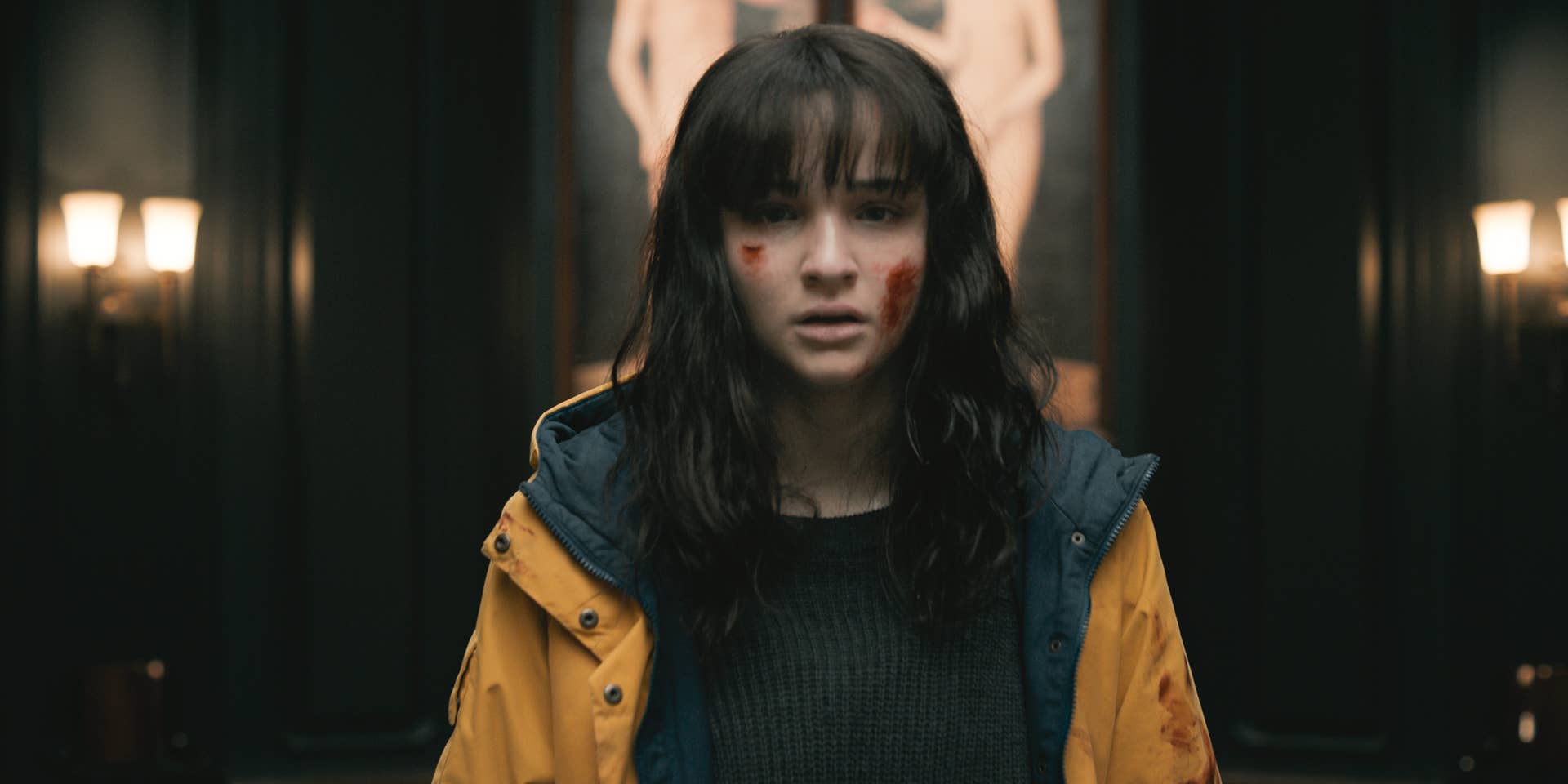
[Ed note: Spoilers for the entirety of Netflix’s Dark follow. You’ve been warned.]
Dark, Netflix’s first German-language original series, was initially compared to Stranger Things. It seemed like an apt association between the two at the time: a kid mysteriously vanishes in the woods of a small town located near an ominous nuclear factory. Yet as Dark continued, those initial comparisons evaporated. The series has effectively charted its own course, opting for a tale far more cerebral—while becoming a treatise on human nature and generational trauma as told through decades’ worth of story via time travel. Obsessed with stopping the forthcoming apocalypse, the main character Jonas (Louis Hofmann) works tirelessly to prevent the end of days throughout Seasons 1 and 2. However, the mistakes of the past linger well into the present and future, and any attempt to right these wrongs did the opposite, reinforcing the status quo instead. The Season 1 ploy by Ulrich (Oliver Masucci) to kill a young Helge Doppler (Tom Philipp) was never bound to work considering Helge was alive in the present day. Actions like this, among others, have proven to be inherently futile; time is undefeated after all.
And so the apocalypse still arrived. But the end of the world was both literal and figurative for Jonas, as he was forced to watch the ominous Adam (Dietrich Hollinderbäumer, playing an old version of Jonas) kill his beloved girlfriend Martha (Lisa Vicari)...only to have another, alternate version of Martha appear and whisk Jonas away. The idea of a multiverse was a logical extension of the plot creators Baran bo Odar and Jantje Friese had already spun. Dark is a series wherein one character’s daughter is also her mother (!), so introducing an alternate universe never felt far afield.
In the early stages of the show’s third and final season, it becomes clear that, despite Jonas having traveled to an entirely different version of the town of Winden, some things remain constant: Ulrich is still prone to cheating on his spouse; Magnus (Moritz Jahn) and Franziska (Gina Alice Stiebitz) are still desperately in love with one another; Martha has her own evil, older self named Eva (Barbara Nüsse) to match Jonas’ Adam; and, try as everyone might, the apocalypse is still coming. Round and round we go; time is, indeed, a flat circle.
Dark gives Rust Cohle’s well-worn axiom a specific purpose, however. As is eventually revealed, the two worlds are joined together (a concept referred to as “The Knot”) and thus have secretly been at war this whole time. The machinations of the older versions of Jonas and Martha work at cross-purposes to one another: Adam is intent on destroying The Knot, while Eva works to actively preserve it—an ebbing and flowing duality that infinitely perpetuates. The revelation makes the repetition of these cycles a feature instead of a bug, a conflicting duality that renders so many of the show’s themes—life and death, cause and effect, choice and predetermination, dark and light, beginnings and endings—more literally. It’s especially poetic to consider Odar and Friese themselves as Adam and Eva: both duos move characters around like pieces on a chessboard to fit the story, asking for blind trust that all will be eventually revealed. Seriously, the number of times characters on this show ask one another for trust feels like Odar and Friese begging the audience to hang in just a little bit longer.
Considering the third season throws a (literal) whole new world’s worth of information at the audience (alternate Marthas, the fact she and Jonas have a child together, and so much more), I anticipated not getting an answer to every lingering question—especially once you realize mystery-box shows are content to leave some elements twisting in the wind. But with a show as intricately plotted as Dark, everything is done with purpose. Seemingly throwaway pieces of dialogue turn out to be anything but disposable, which goes to show just how dedicated Odar and Friese are to their story. It’s a focus that manifests in strange ways. I’m still blown away by the fact that the penultimate episode—fittingly called “Between the Time”—intentionally devotes its running time to closing small lingering details. I audibly guffawed when I realized this is how we were going to spend one of our last hours. It’s also a quiet interlude before a powerhouse closer.

Mired in both victory and anguish, the Season 3 finale hinges on the reveal of “The Origin,” that the respective worlds of Martha and Jonas are, in fact, a glitch in the matrix. The pair only exist as an accidental creation of clockmaker H.G. Tannhaus (Christian Steyer) in his attempt to bring his son, daughter-in-law, and their child back to life after a tragic accident in a previous, unseen third world. Duality now expands, and with it, a whole host of new and captivating ideas: Tannahuas’ three departed family members; the Celtic-like Triquetra knot shown on the journals carried by Claudia (Lisa Kreuzer); the three versions of Jonas and Martha’s son; the show’s consistent overlap of past, present, and future; even the three seasons of the series itself. To put an end to the constant war between the two worlds, Jonas and Martha have to decide whether or not to effectively eliminate themselves from the narrative. It’s a heart-wrenching decision that’s rendered exquisitely by Odar’s impressive direction; watching Jonas and Martha rage against the dying of the light is poignant, beautiful, and one of the best finales I’ve ever seen.
Can time be defeated? The answer to this question has always been at the core of Dark’s tale. Odar and Friese masterfully close by showing the symbiotic relationship between endings and beginnings. There’s no victory without sacrifice, no light without darkness, and no love without loss. The tension between each of these conflicting ideas is so interwoven, making it hard to discern where one ends and the other begins. And so Dark concludes not with a hard endpoint on a line, but by elegantly and satisfyingly circling back into itself.


